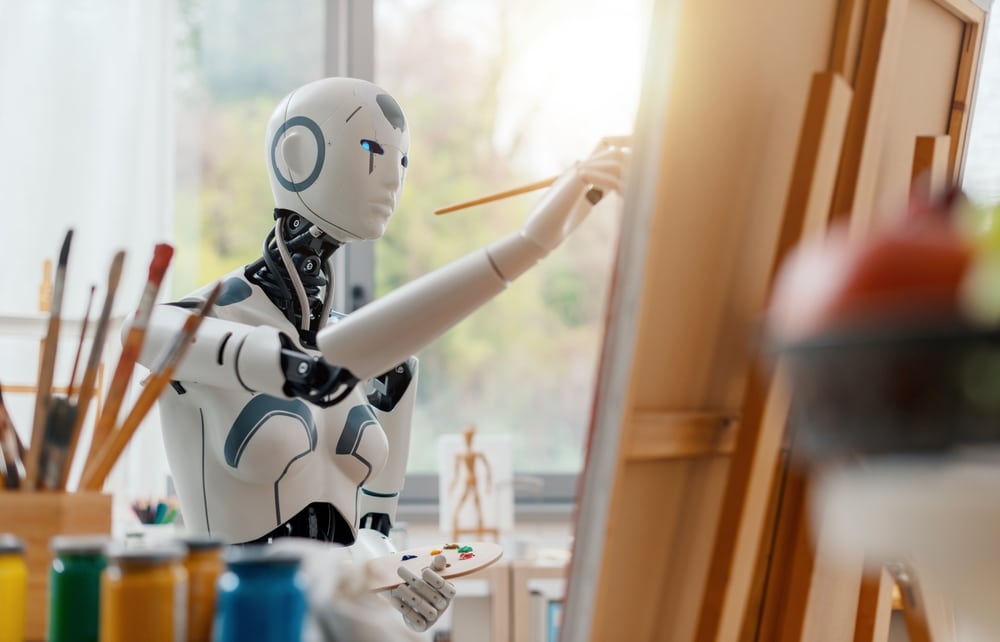Key Insights
- Electric Dreams highlights the historical bond between art and technology, featuring over 150 works from 70 global artists.
- Early pioneers like Harold Cohen used AI to create art, showing the longstanding intersection of technology and artistic innovation.
- The exhibition underscores that AI is an opportunity, not a threat, inspiring future artists to explore technological advancements in their work.
The creators of Tate Modern’s latest exhibition, Electric Dreams, advocate for artists to see AI technology as an opportunity rather than a threat to creativity. The exhibition, opening on November 28, explores the long-standing relationship between artists and technology, showcasing more than 150 works from 70 artists worldwide.
Catherine Wood, Tate Modern’s Director of Exhibitions and Programmes, emphasized that the exhibition aims to show the intertwined nature of art and technology over the decades. “As a museum, we wanted to say this is not a new conversation,” she explained. “Humans and artists have been grappling with these questions for a long time so we wanted to give the long view on the social, existential, and artistic questions around uses of technology to make art.”
The exhibition features a range of technologies, some of which date back several decades. Notable among these is Otto Piene’s Light Room (Jena), which uses beams of light in a darkened room to create “sculptures.” This piece, which has never been displayed in Britain before, exemplifies the ongoing exploration of new mediums by artists.
Art Pioneers and Early AI Technology
Electric Dreams includes works by artists who were early adopters of technology, creating pieces that appear surprisingly contemporary. One such artist is Harold Cohen, whose paintings were produced by AARON, a drawing machine widely regarded as the first AI technology for art creation. “At the time with Harold Cohen, people did think it was gimmicky and it was marginalized. People were suspicious but from this vantage point he was a real pioneer and a visionary,” Wood said.
The exhibition also includes immersive works by artists such as Carlos Cruz-Diez and the German duo Monika Fleischmann and Wolfgang Strauss. These early pieces laid the groundwork for contemporary immersive art experiences, despite initial skepticism about their longevity. Wood noted, “Those early pioneers were on the bleeding edge of what was possible and are still relevant.”
Early Risks and Technological Challenges
The exhibition highlights not only the technological advancements but also the risks taken by early artists. Atsuko Tanaka’s Electric Dress from 1956 is one of the oldest pieces in Electric Dreams. It showcases how Japanese artists were prepared to take significant risks and pioneer new styles.
Wood commented on the Gutai group, which Tanaka was part of, “The Gutai group she was part of was making the process of making art a theatrical spectacle and making it visible in ways that feel completely philosophically natural in our age of sharing everything on social media.”
One of the primary challenges in assembling the exhibition has been getting the old technology to function correctly. Tate’s “time-based media team” has been working to ensure that the hardware, such as Cohen’s drawing machines, operates as intended. “They need quite a lot of coaxing,” Wood admitted. “It’s often a question of do you preserve the object at the expense of it being able to act? We need these things to be working and acting. We want them to be interactive.”
Contemporary Relevance and Legal Concerns
The debate about artificial intelligence and art remains contentious. Recent years have seen several class-action lawsuits in the US, with artists claiming that AI companies have used their work without permission.
Ai Weiwei, a prominent contemporary artist, has criticized AI-generated art, describing it as “meaningless.” He speculated that if iconic artists like Picasso or Matisse were alive today, they might feel compelled to abandon their artistic practices in response to AI advancements.
Despite these concerns, the creators of Electric Dreams believe that the integration of AI and technology in art is not a threat but an opportunity for new forms of creativity. The exhibition aims to provide a historical context, demonstrating that artists have always adapted to new technologies and used them to expand the boundaries of their work.
At Tokenhell, we help over 5,000 crypto companies amplify their content reach—and you can join them! For inquiries, reach out to us at info@tokenhell.com. Please remember, cryptocurrencies are highly volatile assets. Always conduct thorough research before making any investment decisions. Some content on this website, including posts under Crypto Cable, Sponsored Articles, and Press Releases, is provided by guest contributors or paid sponsors. The views expressed in these posts do not necessarily represent the opinions of Tokenhell. We are not responsible for the accuracy, quality, or reliability of any third-party content, advertisements, products, or banners featured on this site. For more details, please review our full terms and conditions / disclaimer.
